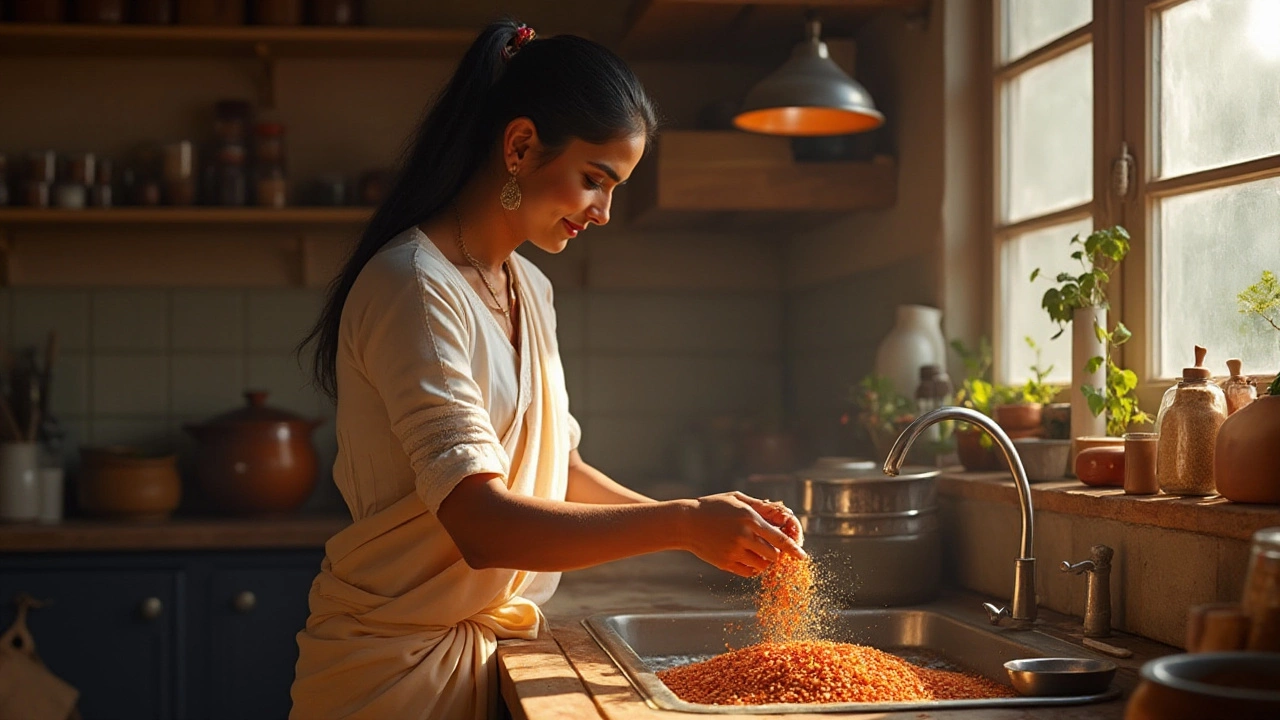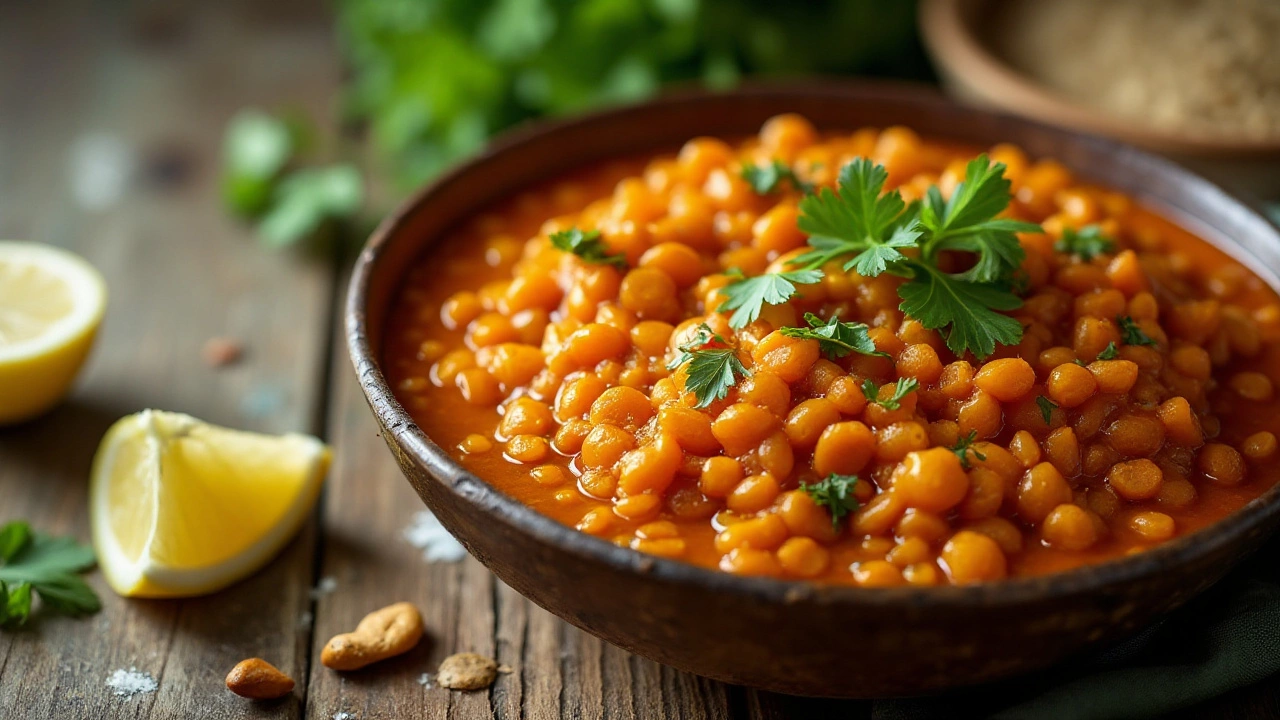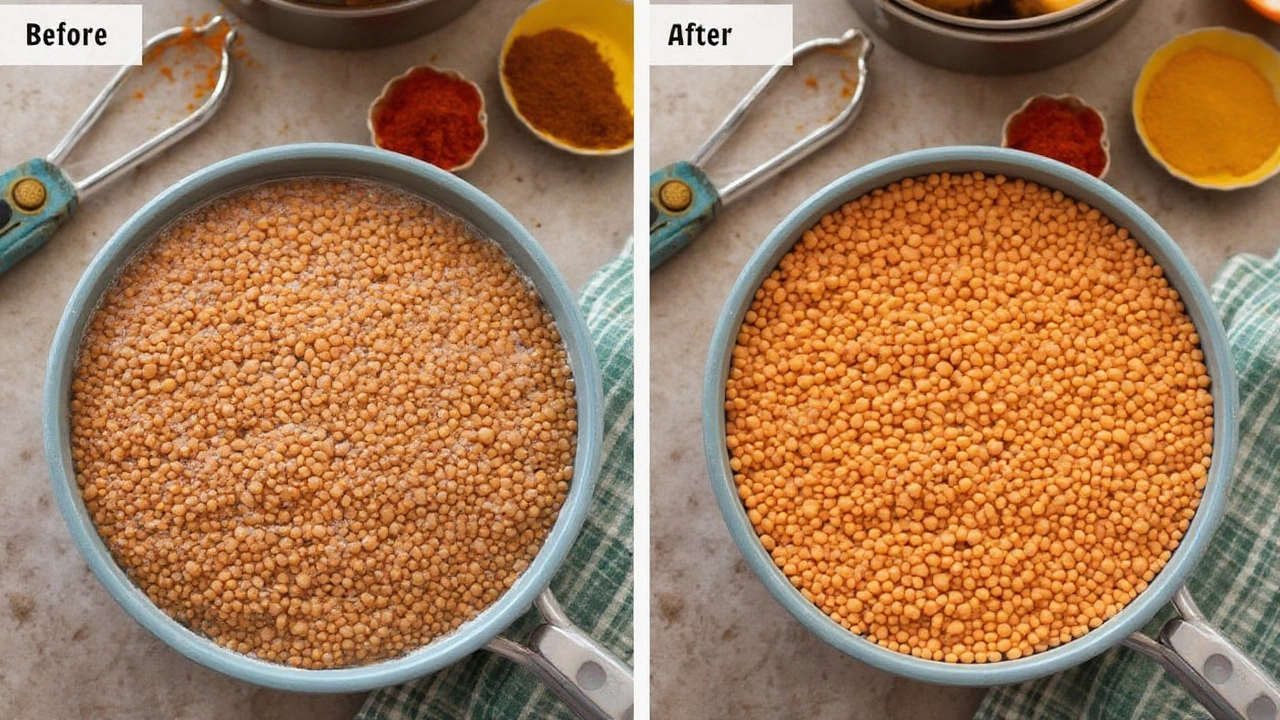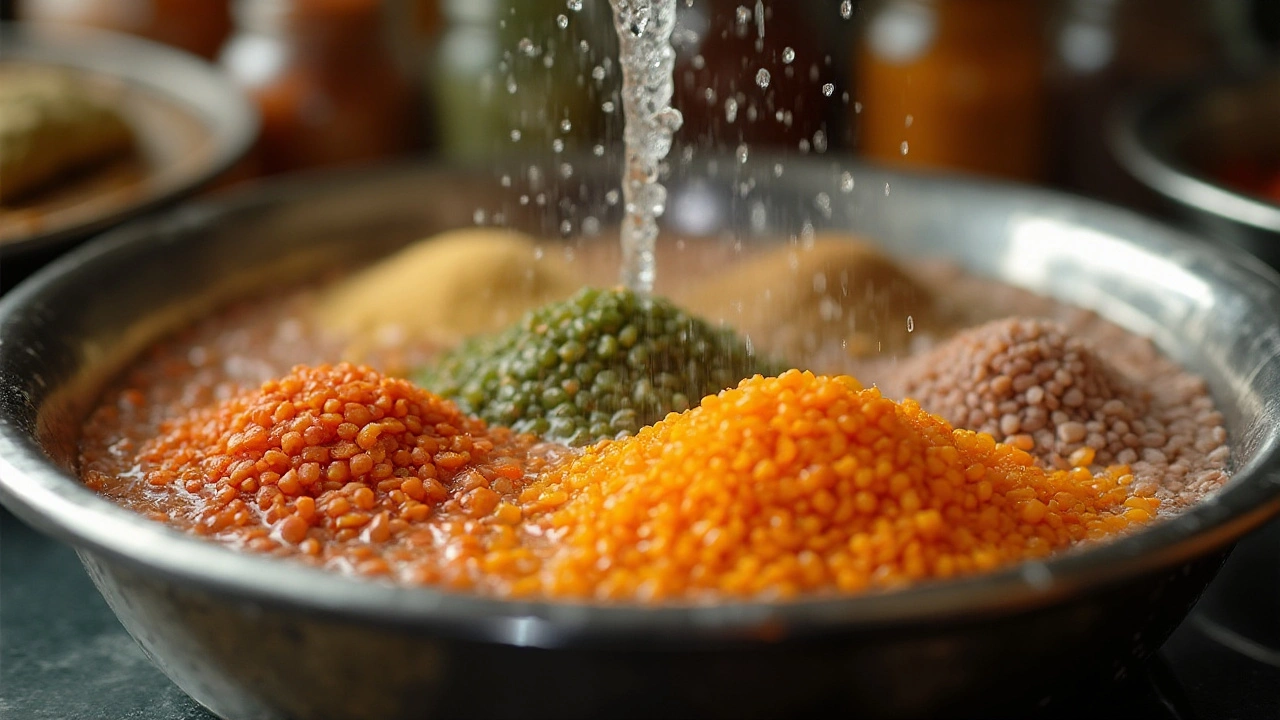In the world of simple yet wholesome cooking, lentils often hold a cherished spot in pantries around the globe. Known for their versatility and nutritional benefits, these little legumes pack a punch when it comes to making comforting and nutritious meals. But have you ever wondered why so many recipes insist on rinsing lentils before you even think about cooking them? Could it be a necessary step or merely an optional suggestion?
Rinsing lentils is more than just a ritualistic act. It holds the key to unlocking an enhanced flavor, improved texture, and an overall more wholesome experience when you sit down to enjoy your meal. Let's explore what happens if you don't rinse lentils, why it's such a valued practice among home cooks and professionals alike, and how it can transform your modest dal into a bowl brimming with savory goodness.
- The Purpose of Rinsing
- How Rinsing Affects Taste and Texture
- Nutritional Impact of Skipping Rinse
- Tips for Rinsing Lentils Effectively
The Purpose of Rinsing
Rinsing lentils might seem like an extra step in the rush of assembling your lentil recipes, but it serves several crucial purposes. At its core, rinsing is about cleanliness. Lentils, like all legumes, are an agricultural product and thus susceptible to catching dirt, debris, and sometimes little stones during harvesting and packaging. By rinsing, you remove these unwelcome elements, ensuring your meal is clean and safe to eat.
Beyond the simple act of cleaning, rinsing can have a direct impact on the flavor and texture of the final dish. When lentils are processed, they often develop a thin layer of dust-like residue, which if not washed away, can result in a muddied flavor profile when they're cooked. This residue may also contribute to a cloudy appearance in dishes, which can dampen the visual appeal of delectable dal or any lentil soup.
Moreover, rinsing helps hydrate the lentils, softening them slightly and allowing them to cook more evenly. This pre-soak doesn't just promote more uniform cooking; it also reduces the likelihood of lentils splitting or turning mushy at the end stages of preparation. This attention to detail can elevate your dish from something simple to something that feels like a warm, textured hug in every bite.
According to The New York Times, rinsing beans and legumes can significantly improve both the texture and taste of final dishes. They assert, "A good rinse can wash away the past, bringing out the future potential of these humble ingredients."
For those who are nutritionally conscious, rinsing plays an unexpected yet vital role. Lentils naturally contain anti-nutrients such as phytic acid, which can impede the absorption of important minerals in the body. While rinsing alone won't eliminate them completely, it does contribute to reducing their presence, making the nutrients in lentils more bioavailable. Thus, rinsing is subtly powerful, enhancing both the sensory and nutritional value of lentils, laying down the groundwork for a meal that is not only delicious but nourishing.

How Rinsing Affects Taste and Texture
Rinsing lentils might seem like a trivial step, yet it plays a substantial role in shaping both the taste and texture of the final dish. When you rinse lentils, you remove surface dust and debris that accumulate during processing and transportation. These particles can lend an unwanted earthy or gritty flavor to the dish, overshadowing the subtle, nutty taste that well-cooked lentils offer. This aspect is particularly crucial when making lentil recipes that require a nuanced balance of flavors, such as a traditional dal.
Texture is another domain where rinsing makes its mark. Lentils that have not been rinsed may retain starch residues on their surface, which can cause them to clump together or cook unevenly. This results in varying textures within the dish—for example, some lentils might remain hard while others become mushy, disturbing the intended culinary harmony. Rinsing helps to wash away this excess starch, ensuring each lentil cooks uniformly to a pleasingly firm yet tender consistency. Such consistency is essential when crafting recipes where lentils should soak up spices and sauces evenly, making every bite a cohesive taste experience.
For those who prefer quantifiable insights, consider the words of chef and food writer, Deborah Madison, who notes,
"Rinsing lentils guarantees the clean palette you're aiming for—it quiets any interference the little pebbles of dirt might have on the soup or stew you are creating."Her observation underscores the often-overlooked fact that the simple act of rinsing can elevate your culinary creations from good to great.
Besides improving taste and texture, rinsing allows you to sort out damaged or spoiled lentils before cooking. This step gives you control over quality, ensuring that only the best make their way into your pot. Furthermore, this process can help prevent potential bitterness that can sour the entire endeavor. Selecting and rinsing lentils might take a few extra minutes upfront, but the effort translates into a stellar dining experience.
Interestingly, not all lentils are created equal when it comes to their rinsing needs. Depending on their type, some might have even more surface dust or starch that requires attention. This is particularly true for larger types, where shapes and crevices can harbor more residues. Being mindful about the variety of lentils you're using allows you to adjust your rinsing technique accordingly, ensuring optimal preparation each time you cook. So, equip yourself with this foundational knowledge, and watch as your soft, inviting lentil dishes consistently delight the senses.

Nutritional Impact of Skipping Rinse
When preparing lentils, rinsing them might seem like an unnecessary inconvenience, but skipping this step can actually lead to some unintended nutritional consequences. Lentils, like many legumes and grains, are coated with dust and other particulates from the fields and storage containers. This exterior coating often includes antinutrients such as phytic acid, which can interfere with the absorption of beneficial nutrients like iron, zinc, and calcium. By not rinsing, you may inadvertently limit your intake of these vital minerals, which are especially important for those who rely heavily on lentil recipes in their diet.
Besides the antinutrients, there is the presence of dirt particles, stones, and even some pesticides that could hitchhike from the farm to your pantry. These elements not only affect the safety of your food but may also affect its nutrient profile. Unrinsed lentils might carry pesticide residues, depending on where and how they were farmed, which could pose long-term health risks if consumed repeatedly. Washing them thoroughly helps minimize such exposure, encouraging a safer and more health-conscious dining experience.
The practice of rinsing also aids in removing excess starch. By neglecting it, you might find your cooked dish weighs down your digestion more than it should. The starchy water clinging onto the lentils can contribute to bloating and discomfort, especially for those with sensitive digestive systems. On the other hand, clean lentils tend to maintain a lighter, more digestible quality that enhances the meal's nutritional harmony.
According to Dr. John Smith, a leading nutritionist:
"Rinsing lentils is a simple yet effective step that ensures better nutritional uptake and digestion. Even if you're short on time, a quick rinse can make a significant difference to your health."This underscores the simplicity and necessity of making rinsing a habitual part of your dal preparation routine.
There's science to consider, too. Research indicates that rinsed lentils, free from impurities, cook more evenly, which leads to a better taste and allows the nutrients to be more readily available for absorption. For instance, studies show a consistent improvement in protein usability when lentils are washed beforehand. Of course, this means you get to enjoy the full spectrum of health benefits these mighty legumes offer, from enhanced muscle repair to improved energy levels.

Tips for Rinsing Lentils Effectively
When it comes to preparing a delightful and nourishing dish, the seemingly simple act of rinsing lentils can make a world of difference. Yet, not everyone pays attention to the finer details of this pivotal step. Many people may already know that rinsing helps to remove dust and small stones, but there is so much more nuance involved. Rinsing your lentils is an art that transforms your lentil dishes into culinary masterpieces. To really understand this process, it's important to appreciate why each step is crucial and how best to approach it. Rinsing helps in enhancing the flavor profile and texture, ensuring that your lentil recipe doesn't end up gritty or unpleasantly earthy. By thoroughly rinsing, you also ensure the removal of naturally occurring compounds that could potentially interfere with digestion.
To start with, always sort through your dry lentils. This is the initial step before any rinsing action takes place. Despite advancements in packaging, small stones and debris might still find their way into the package. Once you've sorted out any unwanted materials, place the lentils in a fine-mesh strainer or colander. Run cool water over them, stirring gently with your fingers. This action allows the water to reach all the surfaces of the lentils, ensuring that every bit is washed. The water will often become slightly cloudy at first – that's the dirt and starches being washed away.
It's advisable to continue rinsing until the water runs clear. This usually takes a couple of minutes. During this process, consider this insightful advice from revered food writer Harold McGee:
"Rinsing and soaking are classic examples of kitchen science, serving not just to clean our food but to breathe life into its flavors and textures."This emphasis on soaking pertains primarily to beans but resonates with how even a rinse can elevate your lentils' culinary quality. It's also helpful to consider a short soak even after rinsing, especially for certain varieties like green or brown lentils.
Once rinsed, draining thoroughly is crucial. Excess water can skew cooking times and consistency. Shake off any excess water and ensure the lentils are ready to absorb flavors during cooking rather than boil in excess moisture. If you wish to take it a step further, consider engaging in a conversation with your local grocer or a seasoned cook to share tips specific to your locale's usual lentil offerings. Rinsing is a personalized journey that adapts as you learn what works best for your unique cooking style and ingredient sources.
In essence, these simple yet effective rinsing measures ensure that your lentil recipes are not just a meal but an experience. Consider it both an essential practice and a delightful ritual that bridges the gap between ingredient and meal, ensuring that every spoonful resonates with freshness and flavor. So, next time, give rinsing the respect it deserves and see how it transforms your simple dal recipes into something exceptional.
